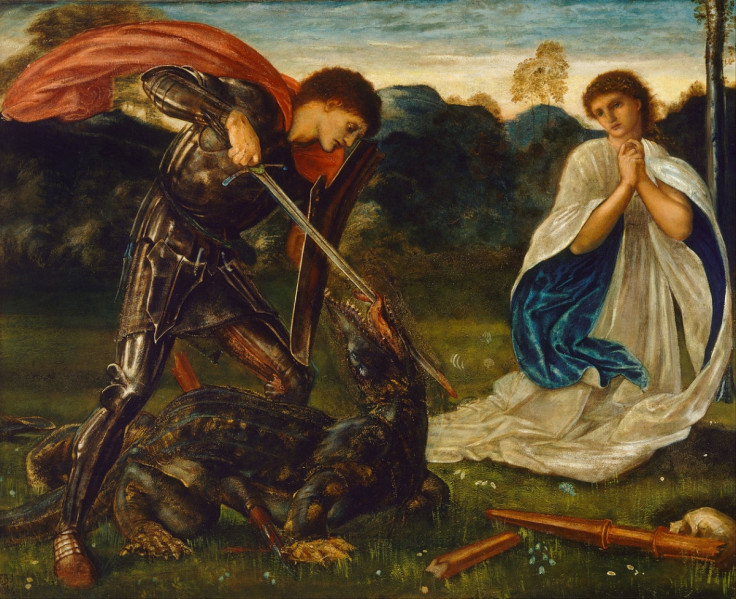St George's Day 2014: Lesser-Known Facts About the English Patron Saint

St George's Day is the patron saint day of England yet many people do not even known its date.
A poll by think tank British Future last year found only 40% of people knew that St George's Day was on 23 April, compared to 71% who knew when America's Independence Day was.
Findings also showed more people know when Ireland's St Patrick's Day was, and that two thirds think 17 March is more widely celebrated in Britain than St George's Day.
An English Heritage survey has also found that just 19% of adults in England plan to celebrate St George's Day.
To mark St George's Day, IBTimes UK looks at some little known facts about St George and St George's Day.
George was from Eastern Turkey
St George was born to Christian parents in 270 AD in Cappadocia, which is now Eastern Turkey. He moved to Palestine and became a Roman soldier, but later resigned and protested against his pagen leader, Emperor Diocletian, who led the persecution of Christians in Rome.
His rebellion led him to be imprisoned and tortured, but he did not abandon his faith. He was eventually dragged through the streets and was beheaded on 23 April 303 AD.
George never slayed a dragon
Many stories about Saint George involve him slaying a dragon. However, this is highly unlikely as dragons with 50ft tails do not exist. Instead, the dragon is believed to have represented the devil or evil at the time.
The story about him slaying a dragon took place in Libya. Locals had been sacrificing maidens from the town to appease the dragon, who lived near the fresh water spring. The next sacrifice was due to be the princess Cleolinda, so George fought the dragon, slayed the beast and saved the princess. To show their gratitude, the people of Selene converted to Christianity.
George and England
George became patron saint of England in 1415 AD, over a thousand years after his death. His reputation had been growing among English soldiers over the centuries, with the first recorded reference coming in the seventh century from St Adomnán, the Abbot of Iona in Scotland.
As Crusaders returned to England they brought with them tales of St George and his reputation as a protector of soldiers grew. In 1099, a record from a church in Dorset tells of a "miracle appearance" where St George led the Crusaders into battle. Soldiers began wearing his signature – the red and white cross – on their chest and backs in the 12<sup>th century.
St George's Day traditions
It used to be popular for people to mark St George's Day by wearing a red rose in their button hole to show the national flower on their national day. Other former traditions that rarely take place now include Morris Dancing and eating fish and chips.
St George: Saint of all sorts
As well as being the patron saint of England, other countries that celebrate St George's Day include: Canada, Croatia, Portugal, Cyprus, Greece, Georgia, Serbia, Bulgaria, Romania, Bosnia and Herzegovina, and the Republic of Macedonia.
He is he patron saint of soldiers, archers, cavalry, chivalry, riders, saddlers, farmers and field workers and people with leprosy, the plague and syphilis. George is also the patron saint of Scouting as he "was typical of what a scout should be".
© Copyright IBTimes 2025. All rights reserved.






















